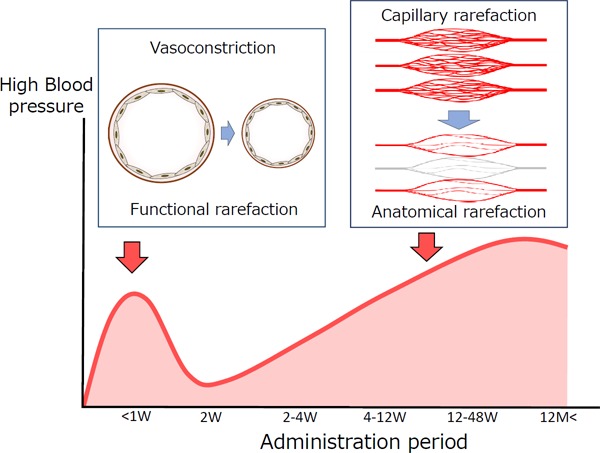Fig. 2.

Timing and mechanism of hypertension caused by anti-VEGF treatment
During the early phase of treatment with anti-VEGF drugs, blood pressure is increased by vasoconstriction caused by disturbance of NO and PGI2 (functional rarefaction). This change occurs immediately after starting treatment in some patients and is irreversible. However, plaque is formed during long-term treatment, resulting in microangiopathy (capillary rarefaction). Peripheral vascular resistance increases, resulting in irreversible changes (anatomical rarefaction).
Quoted from the following articles:
(20) de Jesus-Gonzalez N et al. Hypertension. 2012; 60: 607–615.
(21) Mourad JJ et al. Annals of Oncology 2008; 19: 927–934.
(22) Takada M et al. International Heart Journal 2018 (in press).
